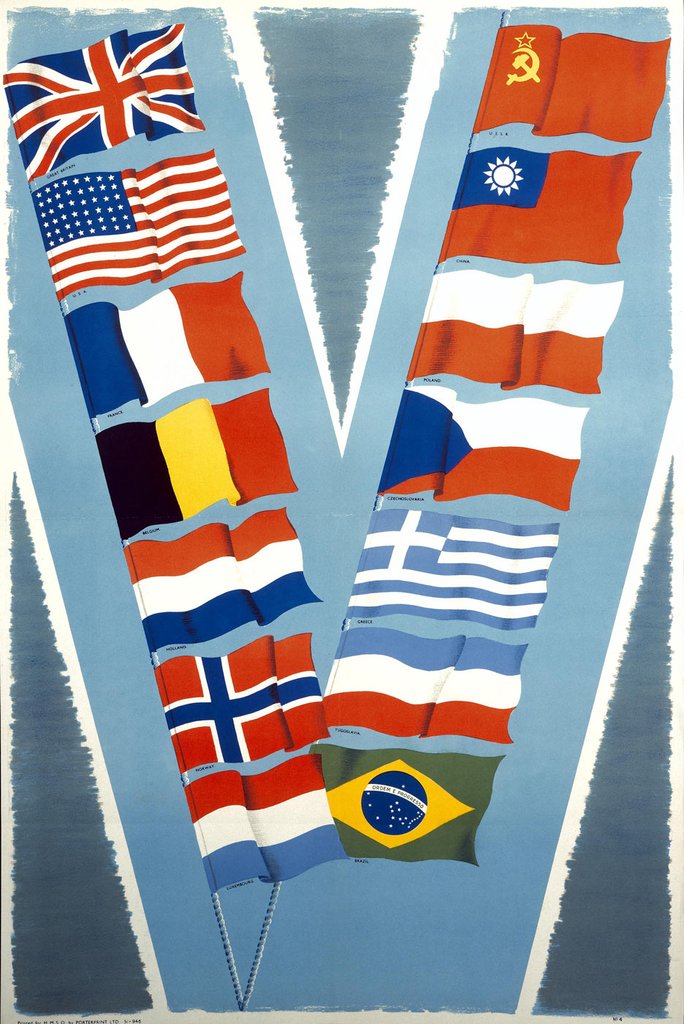Second World War propaganda posters
During the Second World War, the Ministry of Information produced propaganda posters to influence the British public on the home front. These posters promoted a range of government campaigns to encourage domestic food production, salvage and military recruitment.
'Squander bug' poster discouraging wasteful spending
Date: 1943
Catalogue reference: View the record NSC 5/624 in the catalogue
During the Second World War, the British government encouraged people to save their money and invest in the war effort, rather than personal spending. The National Savings Committee produced publicity material to promote the purchase of national savings certificates and to discourage unnecessary spending.
They employed a humorous cartoon character named 'the squander bug', created by artist Phillip Boydell. The character is depicted covered in swastikas, in an attempt to associate wasteful spending with the Nazi enemy. ‘The squander bug’ appeared in many posters, pamphlets and films during wartime.
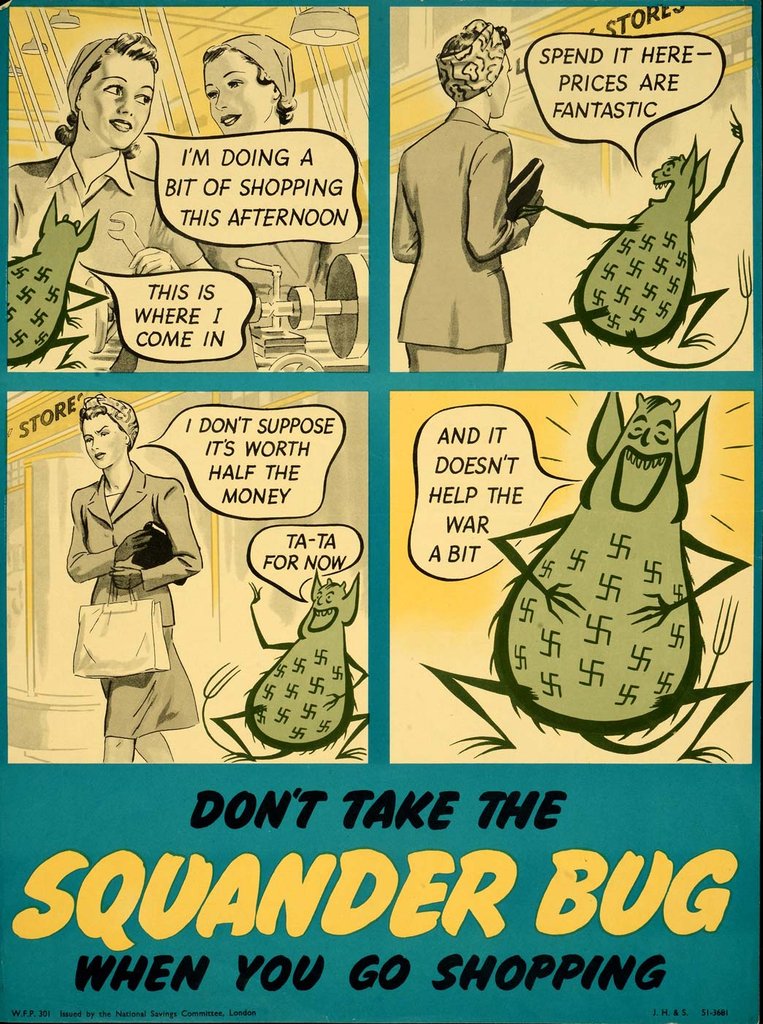
'Keep mum she's not so dumb!' anti-gossip poster
Date: 1941
Catalogue reference: View the record INF 3/229 in the catalogue
This poster, designed by Harold Forster, was produced in 1941 by the Ministry of Information. It was part of a publicity campaign to alert people to the threat of enemy spies and the danger of gossiping and unintentionally passing information to the enemy.
This poster features a woman in evening dress in the centre, gazing directly toward the viewer, surrounded by men in service uniforms. It was designed to warn service personnel against revealing sensitive military information around unknown civilians, particularly in this case attractive women. This poster was one of several using the slogan 'Keep Mum' and it offers an intriguing insight into cultural conceptions of the roles of women during the Second World War.
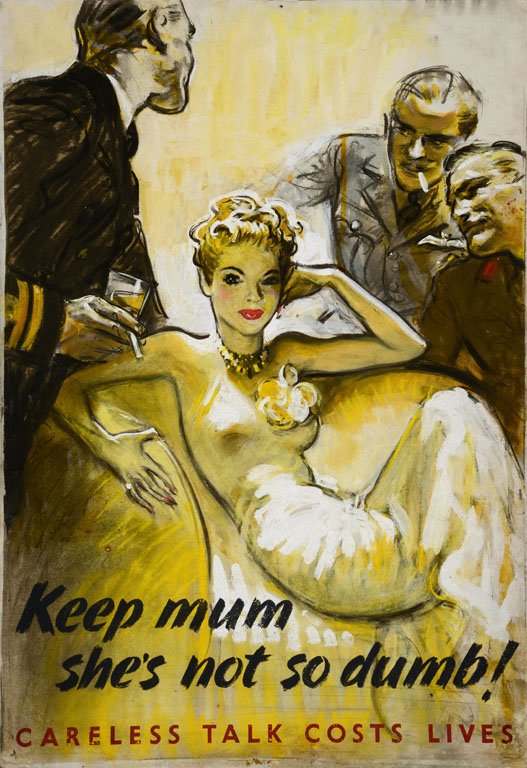
'Comrades in Arms' exhibition advertising poster
Date: 1942
Catalogue reference: View the record EXT 1/48 in the catalogue
From 1941, the USSR was a vital ally to Britain and the Ministry of Information had the task of promoting its war work to the British people. At the same time, the British government were anxious to avoid celebrating its leadership or communist doctrine.
In 1942, the Ministry of Information created an exhibition called Comrades in Arms: Pictures of the Soviets at War. The exhibition displayed Soviet propaganda posters which had been gifted to the Minister of Supply.
This promotional poster for the exhibition shows Winston Churchill and Joseph Stalin united side by side, although with the British prime minister facing away from Stalin's gaze.
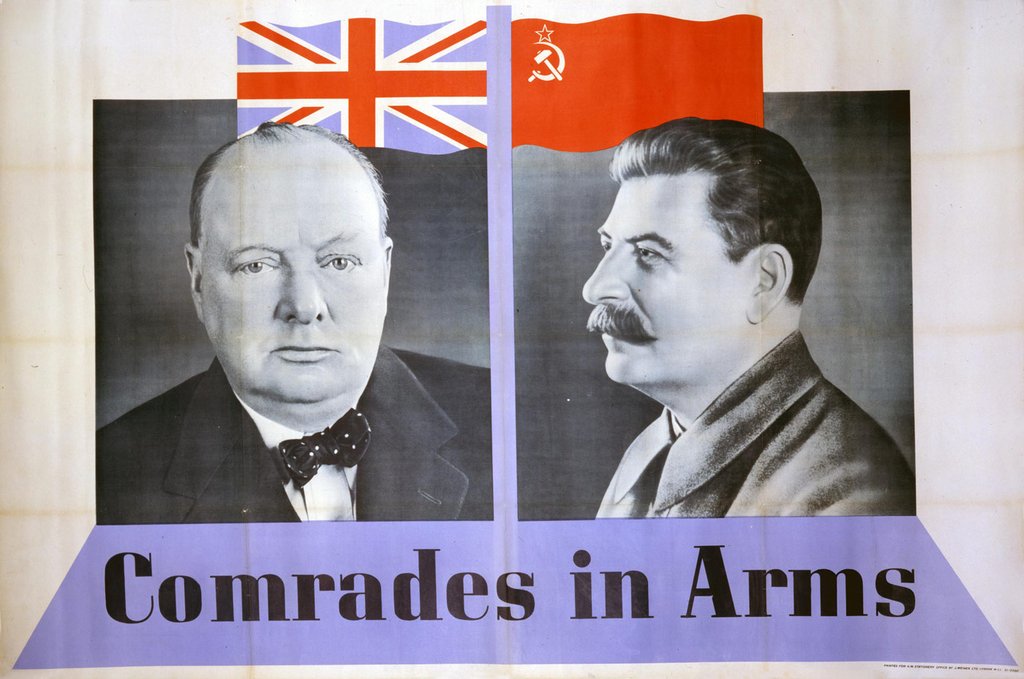
Design for salvage appeal poster
Date: 1939–1945
Catalogue reference: View the record INF 3/220 in the catalogue
Britain relied on shipping to supply its raw materials during the Second World War, and supply lines were in constant threat from U-boat attacks. It was therefore vital to conserve raw materials at home and the Ministry of Information worked on publicity campaigns to encourage salvage and recycling.
This drawing is a rough design for a poster, in ink and watercolour, by Cyril Kenneth Bird, known by his pen name Fougasse. It was designed to associate salvaging metal, bones and paper with the production of new guns and tanks for the war effort.
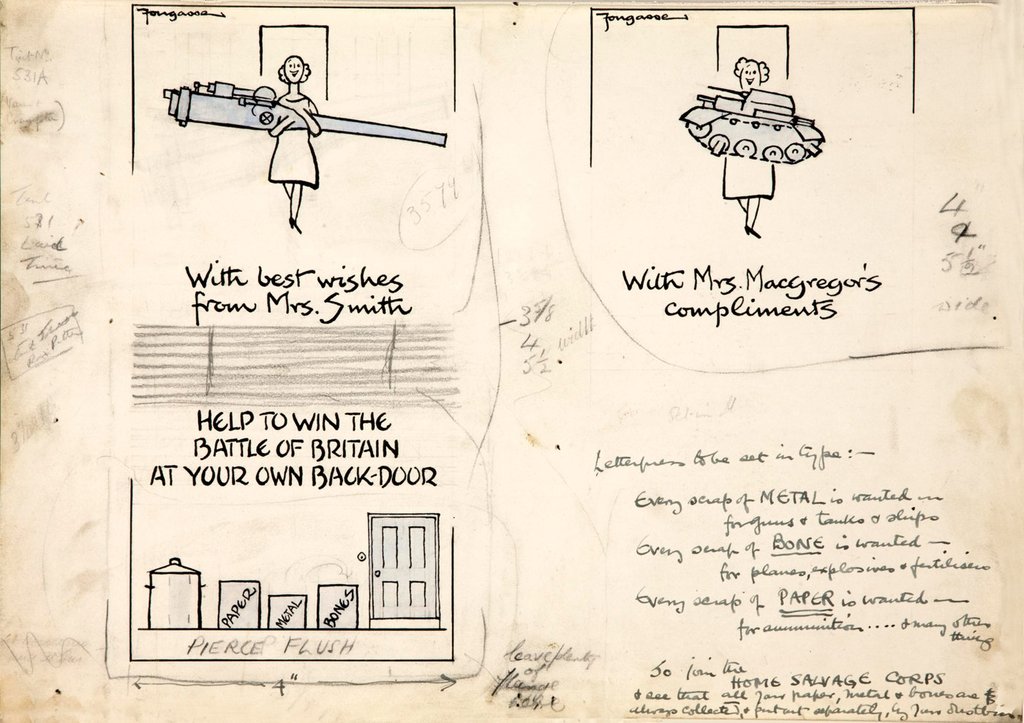
Poster for 'Dig for victory' campaign
Date: 1939–1945
Catalogue reference: View the record INF 13/140 in the catalogue
Public health and food production was a key concern for the British government during the Second World War. At the outbreak of war, Britain imported 70% of its food from overseas, relying on shipping routes vulnerable to U-Boat attack. Food rationing was introduced in 1940 and more attention turned to fruit and vegetables, which were never rationed.
This poster was part of a publicity campaign, initiated by the Ministry for Agriculture and Fisheries with the Ministry of Information, and designed to encourage domestic food production. The campaign was a great success and by 1943 more than a million tons of fruit and vegetables were being grown in gardens and allotments around the country.
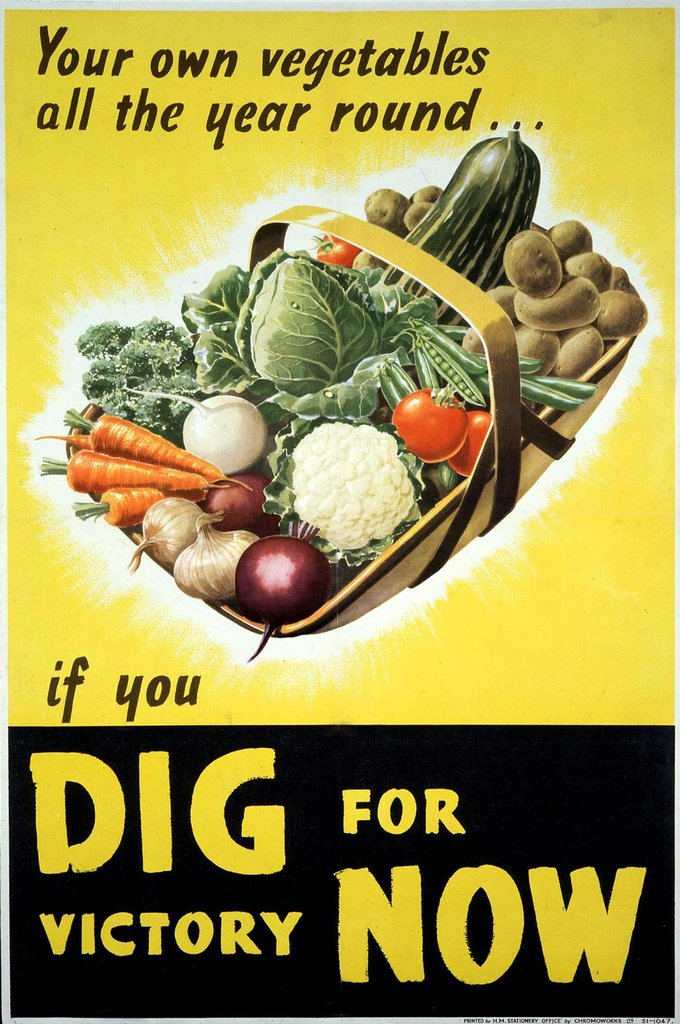
‘Women of Britain, come into the factories' recruitment poster
Date: 1941
Catalogue reference: View the record INF 3/403 in the catalogue
This 1941 poster declaring ‘Women of Britain come into the factories’ was designed by artist and cartoonist Philip Zec. It was part of a recruitment campaign to encourage women to contribute to the war effort by working in factories making munitions and other vital supplies. The design exhibits stylistic elements drawn from Soviet poster art.
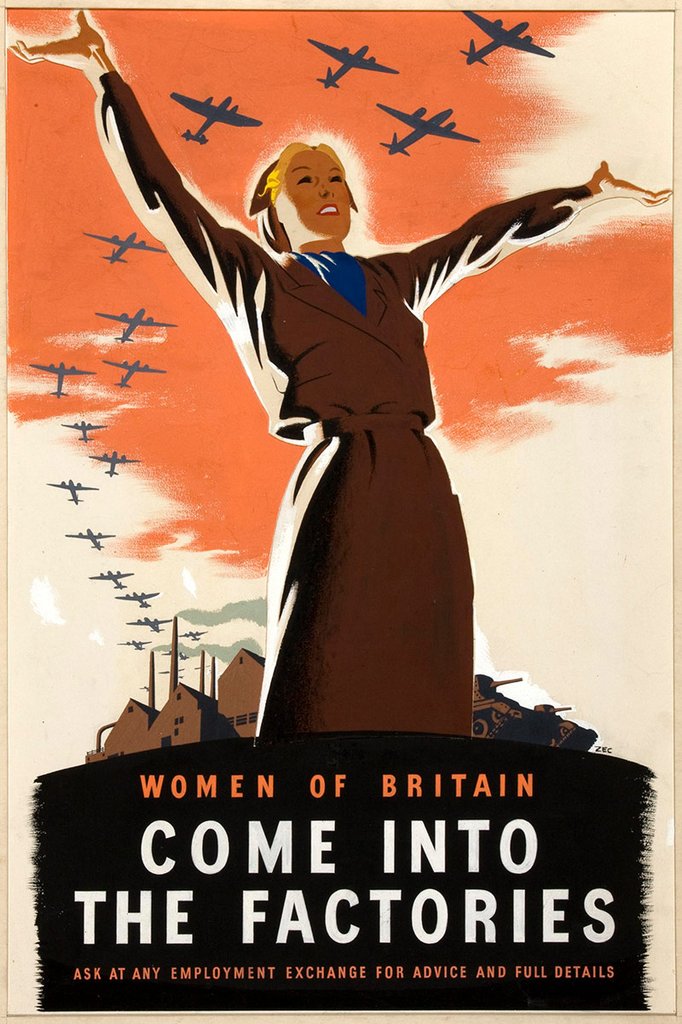
‘Make-do and mend’ campaign poster featuring Mrs Sew-and-Sew
Date: 1943
Catalogue reference: View the record INF 13/144 in the catalogue
In June 1941, clothes rationing was introduced in Britain. The Board of Trade initiated a campaign to assist the public with this new restriction, under the slogan ‘Make-do and mend’. The campaign encompassed pamphlets, posters, exhibitions and events, showing people how to make and mend their clothes while being efficient with materials and fashionable at the same time.
A new character was created, Mrs Sew-and-sew, to help promote the campaign. This poster features the character prominently and the blank space at the bottom was intended to allow organisers to display information about local events.
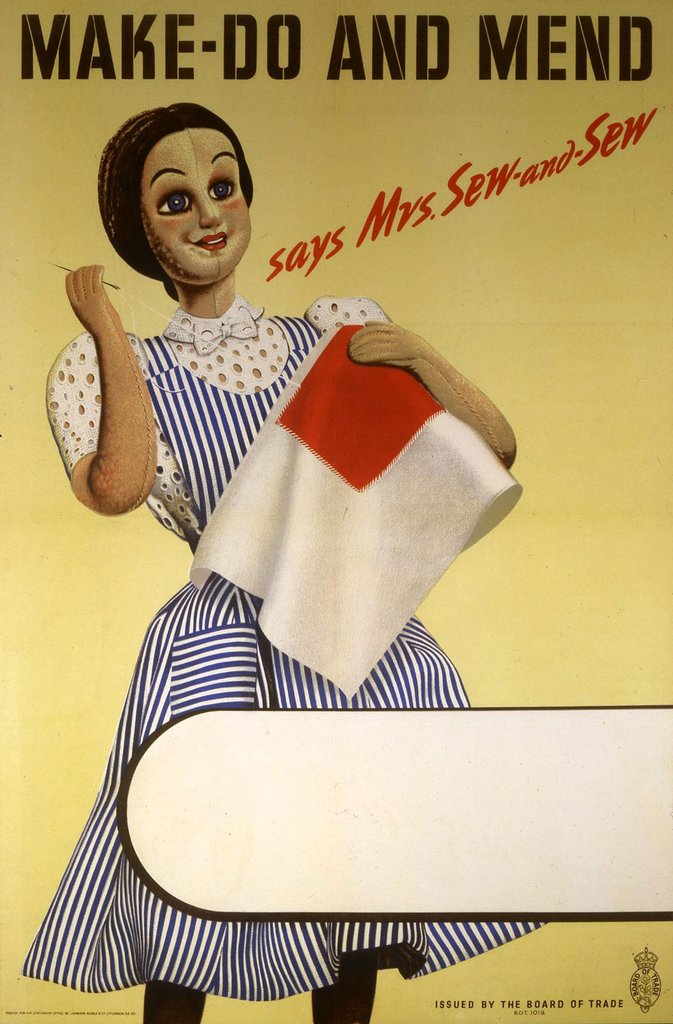
‘Let us go forward together' poster depicting Winston Churchill
Date: 1940
Catalogue reference: View the record INF 13/213 in the catalogue
This poster was produced by the Ministry of Information to strengthen morale and promote unity after Winston Churchill became Prime Minister in May 1940. It superimposes a photograph of Churchill over images of planes and tanks with a quotation from his inaugural speech, where he spoke of ‘Blood, toil, tears and sweat’.
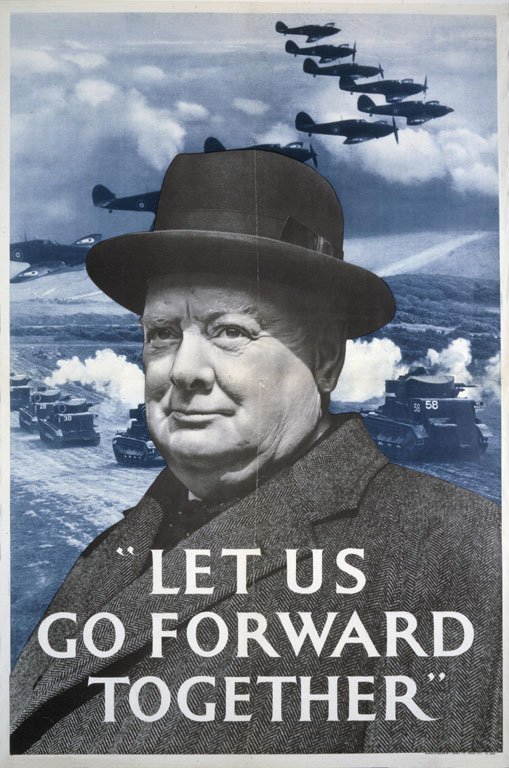
'Back them up!' campaign poster
Date: 1939–1945
Catalogue reference: View the record INF 13/123 in the catalogue
This poster is one of a series using the slogan 'Back them up!' alongside artwork depicting the British armed forced engaged in fighting. The posters were produced by the Ministry of Information to catch the eye and encourage commitment to war production on the part of civilians on the home front. The illustration in this example is captioned 'R.A.F. day raiders over Berlin's official quarter'.
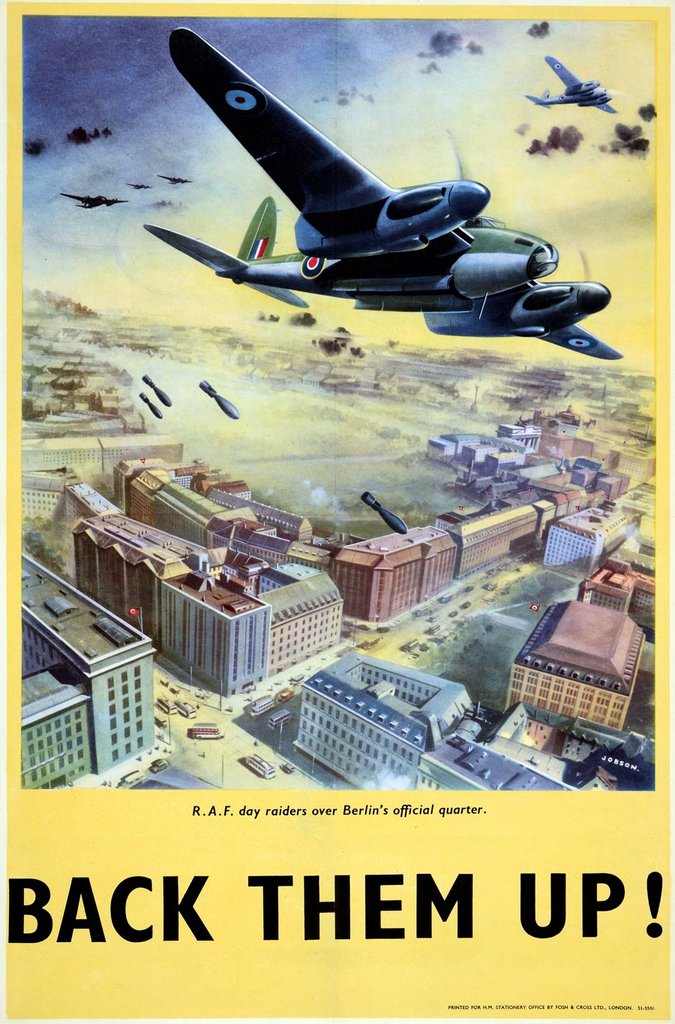
Poster depicting 'V' for victory in allied flags
Date: 1942–1945
Catalogue reference: View the record INF 13/213 in the catalogue
This poster was produced by the Ministry of Information to communicate how important Britain's allies were on the path to victory in the Second World War. It depicts a 'V' for victory, in the form of allied flags. The countries represented are the UK, the USA, France, Belgium, the Netherlands, Norway, Luxembourg, Brazil, Yugoslavia, Greece, Czechoslovakia, Poland, China and the USSR.
